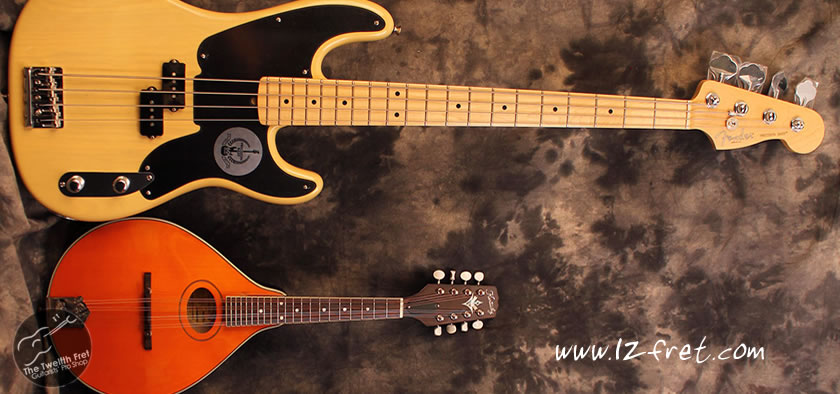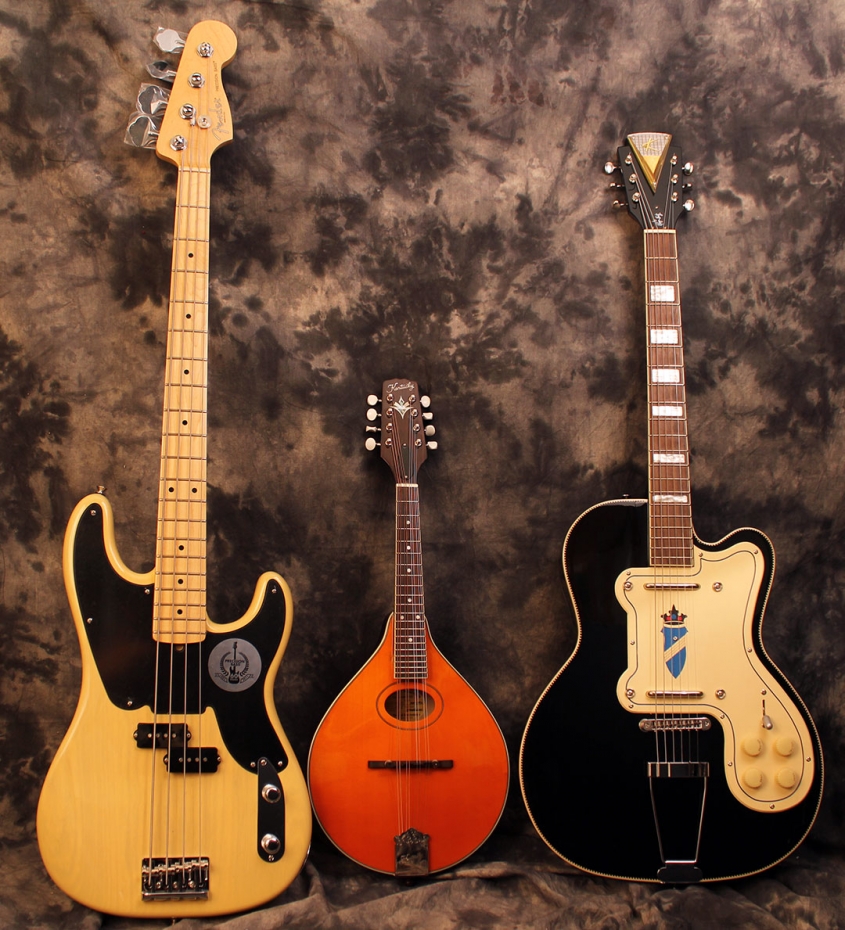
All About A Fretted Instrument Scale Length
What is a Scale Length?
A guitar’s (or any fretted instrument’s) scale length is the basic distance between the nut or zero fret and the bridge’s saddle. This measurement not only determines the placement of the frets for proper intonation, but has a profound effect on string tension, tone, and in some cases, tuning stability.
Scale length and compensation
While the scale length is the basis for nut, fret and saddle placement, the actual string length will be a bit longer, due to the string being stretched sharp on its way to the fret. An amount of compensation is required, and this varies with the string diameter and height. This is why saddles on most guitars are placed on an angle rather than at right angles to the centerline of the neck. Compensation is discussed in a separate article here, but to accurately determine an instrument’s scale length, measure from the front edge of the nut to the center of the twelfth or octave fret, and double the result. In the case of a fretless instrument, look for the octave harmonic and use that as the reference point.
Scale length and string tension
The physics is fairly easy to grasp. If two guitars of different scale lengths (i.e. Fender and Gibson guitars) are strung with equal gauge strings and tuned to normal concert pitch, the shorter scale Gibson will have less tension, resulting in a “looser” feel.
You can prove this to yourself by capoing any guitar at the first fret (effectively shorting the scale length) and then retuning down to concert pitch. The strings will now be under less tension, making them easier to bend and vibrato. You may also notice that the instrument now has more “buzzing” and “fret rattle” when played, because of the increased vibrating amplitude of the looser strings.
The math is that for a given pitch and ‘unit weight’ (this is the weight of the string in pounds per inch), string tension changes with the square of the vibrating length. The unit weight, and hence the tension, can be adjusted by changing the material used for the string or, on wound strings, changing the ratio of core to winding. Consequently ‘heavier” strings can produce “lighter” tension, if they are made for this!
Scale length and tone
While some electric guitarists use a shorter scale instrument to achieve less string tension and easier playability, others see it as an opportunity to get a “thicker” tone utilizing heavier gauge strings. For instance, take two identical electric guitar bodies, one fitted with a 25 1/2″, and the other with a 24 3/4″ scale neck. If you find your technique requires using .009 – .042 gauge strings on the long scale, you’ll probably get the same feel utilizing a heavier .010 – .046 gauge on the short scale instrument, The heavier gauge strings will also have the side-effect of inducing more voltage in your pickups, resulting in a “thicker” fundamental note, and more output.
The scale length also has sonic implications connected with acoustic instruments. A shorter scale acoustic guitar often produces a “woody” tone with an overall warm timbre, while a longer scale is perceived as having more power overall, with increased clarity and distinction in the bass registers. Both sounds are valid, and historically it is not without precedent for a manufacturer to issue two models of guitars whose main difference is scale length (i.e. Martin’s 000 and OM models) or offer the same model with long or short scale as an option (Ramirez concert classicals).
Here’s an image of three instruments with different scale lengths. On the left, the Fender Precision Bass has a 34″ scale, the Kentucky mandolin in the center has a 13.86″ scale, and the Kay Thin Twin is 26″.
Comfort and Playability
Beyond tonal and tension considerations, hand sizes differ! Some players find long-scale instruments physically harder to play because of the increased reach. A full-scale classical guitar has a scale length of about 650 mm, but this is not comfortable for some players, so scales ranging down to 630 mm also available. Many beginners and people without large hands use these guitars, and there’s no reason not to, if it makes playing more enjoyable.
Scale length and frequency range
Long-scale instruments are noted for increased bass output. This is partly because the greater length allows lower sub-frequencies to develop, and the increased tension means that more energy is transmitted to the vibrating surface. You might have noticed that sub-woofer audio systems tend to need a lot more power than high-frequency components. Instruments like baritone and bass guitars, mandolas, cellos, and upright basses make use of this to move more air at low frequencies.
Conversely, instruments like mandolins that are pitched to a relatively high frequency use short scales to reduce tension to an amount that a string – and the instrument – can withstand! It’s notable that the 5th string G on a 5-string banjo is tuned high. and the 5th string peg is usually at the 5th fret, significantly shortening its length.
Comparison Chart
Here’s a chart that shows the scale lengths of a number of instruments around The Twelfth Fret shop at the moment.
| Instrument | Scale (inches) | Scale (mm) |
| Fender Telecaster or Stratocaster | 25.5″ | 647.77 mm |
| Gibson Les Paul or SG | 24.75″ | 628.65 mm |
| Fender Precision or Jazz Bass | 34″ | 863.6 mm |
| Hofner Beatle bass | 30″ | 762 mm |
| Hagstrom 8-string bass | 30 11/16″ | 779.5 mm |
| Gretsch White Penguin, 6118, or Billy Bo Jupiter | 24.625″ | 625.5 mm |
| Martin D-18 or D-28 | 25.4″ | 645.2 mm |
| Martin 000-28 | 24.9″ | 632.5 mm |
| Gibson J-45 Legend | 24.625″ | 625.5 mm |
| Gibson L-4 | 24.75″ | 628.7 mm |
| Gibson Advanced Jumbo | 25.5″ | 647.7 |
| Larrivee Baritone | 26.9″ | 683.3 mm |
| Ramirez 4NE | 25.59″ | 650 mm |
| Various Mandolins – Gibson, Collings, Kentucky | 13.86″ | 352 mm |
| Trinity College Octave Mandolin | 20.16″ | 512 mm |
| Collings UC-2 Soprano Ukulele | 15″ | 381 mm |
| Kala Tenor Ukulele | 17″ | 431.8 mm |

